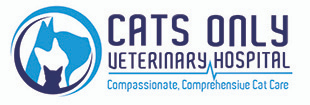As discussed last month, a pet food label is a legal document rather than giving you useful information about your cat’s diet. Check out the previous Blog: FOOD FOR THOUGHT: Pet Food Labels Part 1. To give you additional headaches, here are some more examples of how minor details in the wording can have major effects on what is in your cat food:
Chicken Cat Food
Cat Food means 95% of the named ingredient must be in the diet (not including water). This is the “95% rule.” Remember, cats need nutrients, not ingredients. The ingredient does not tell you about quality, safety, digestibility or bioavailability. These diets generally have the listed ingredient (i.e. chicken) as the first ingredient. When water is added in, chicken must be 70% of the diet.
Chicken & Turkey Cat Food
The “95% rule” applies here again. 95% of the diet needs to be a combination of chicken and turkey. However, there needs to be more of the first named ingredient (chicken) in the diet.
Chicken Dinner
Dinner means a minimum of 25% of the named ingredient must be in the diet (not including water). This is the “Dinner” or “25% rule.” Chicken can be anywhere between 25% & 94%. Simply by changing the phrase Chicken Cat Food to Chicken Cat Dinner, you may decrease the amount of chicken in the diet by as much as 70%. You may have 94% chicken in the diet but it still needs to be labeled chicken dinner. These diets generally have the listed ingredient (chicken) further down on the ingredient list. When water is added in, chicken still must be at least 10% of the diet. To confuse matters more, you may purchase a chicken dinner diet only to discover another protein source (i.e. fish) may have a higher percentage than the chicken after reading the ingredient list. Other terms you may see that act like the term “dinner” include “entrée,” “formula,” and “platter.”
Chicken & Turkey Entrée
The “25% rule” applies here. 25% of the diets needs to be a combination of chicken and turkey. Again, there needs to be more of the first named ingredient (chicken) in the diet. The other listed ingredients in the title needs to be at least 3% (i.e. turkey needs to be at least 3% of the diet).
Chicken Cat Food with tuna
With highlights diets with an ingredient in sufficient quantities (at least 3%) but not enough to meet the “dinner” or “25% rule.” This is the “With “or “3%” rule. This diet still has 95% chicken with at least 3% tuna added. Be careful with the wording. Can you tell the difference between Chicken Cat Food and Cat Food With Chicken? Chicken Cat food is 95% chicken while Cat Food With Chicken has only 3% chicken. One little word (with) can decrease the amount of chicken in the diet by 92%! Words make a huge difference. See why pet food labels are referred to as legal documents?
Chicken Flavored Cat Food
Enter the “Flavor” rule. This diet must have enough chicken to be detected and no chicken percentages are required. Any ingredient that gives a “chicken flavor” to the diet can be used like chicken by-products, chicken meal or chicken digest. Companies use specific tests to make this claim. There may be no chicken in the diet, only an ingredient (i.e. chicken digest) that produces a chicken flavor.
when selecting a diet for your cat.
I only use the pet food label to avoid ingredients that are known to cause a food allergy in an individual cat. Cat owners are better served by sticking with large pet food companies that employ veterinary nutritionists to formulate their diets. Preference is given to companies that employ AAFCO feeding trials (and nutrient profiles) and manufacture their own diets in their own facilities.
if you are interested in cat nutrition.

